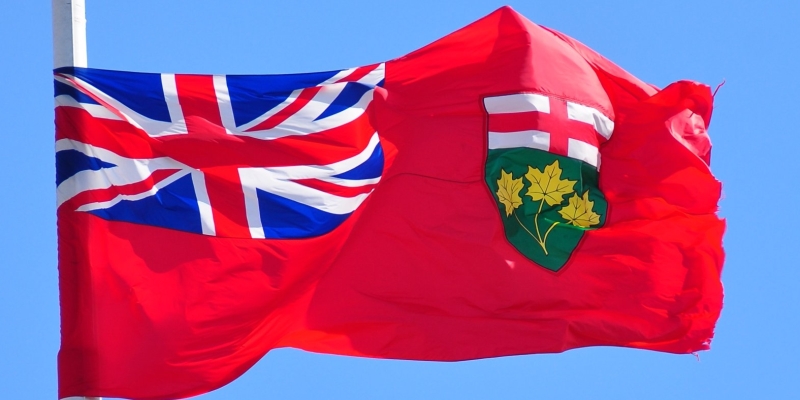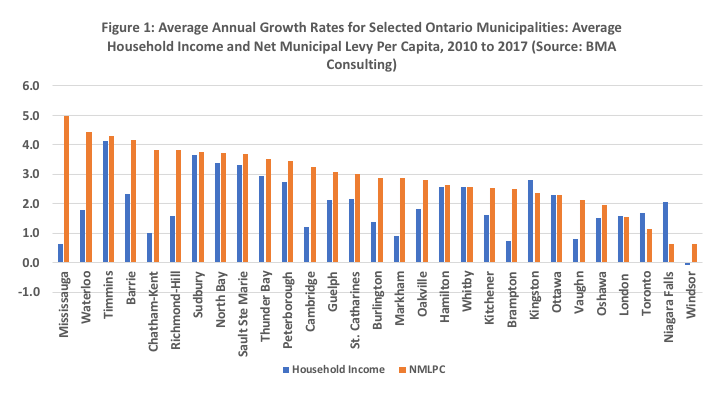Municipal spending in Ontario—a snapshot

With municipal elections looming across the country, voters should be aware of the fiscal sustainability of city hall. The federal Parliamentary Budget Office’s recent sustainability report has noted that for subnational governments in Canada (with the exception of Quebec) current fiscal policy is not sustainable.
Of course, municipalities are creatures of the provinces, which means that provincial fiscal problems will inevitably reach the municipalities should provinces choose to download their fiscal problems.
In Ontario, among the many statistics provided in the annual BMA Municipal Study, based on an annual survey of participating municipalities, are comparisons of spending on municipal services. An estimate known as the “net municipal levy per capita” indicates the total spending required for a municipality to provide its services (as determined by the administration and council) and ultimately feeds into required property tax revenues.
Now the BMA reports note that municipal spending per capita can vary due to different quantity and quality of service levels. There are also demographic and socioeconomic reasons why spending may vary across cities, and per capita spending is simply an aggregate not an indicator of value for money.
However, the BMA maintains that changes in per capita spending reflects changes in total spending relative to population and “Increasing per capita expenditures may indicate that the cost of providing services is outstripping the community’s ability to pay, especially if spending is increasing faster than the resident’s collective personal income.”
So, how does spending in Ontario municipalities over time compare to the growth in income?
Well, the chart below uses data from BMA Municipal Studies on average annual household income and the net municipal levy per capita for the period 2010 to 2017 for 29 major Ontario municipalities, illustrating the average annual growth rates. The municipalities are ranked from the highest expenditure growth rate to the lowest and the growth rate of household income plotted alongside.

The average annual growth rate of municipal per capita spending in these Ontario cities ranges from a high of 5 per cent for Mississauga to a low of 0.6 per cent for Windsor. Meanwhile, the average annual growth rates in household income range from a high of 4.1 per cent for Timmins to a low of -0.1 per cent for Windsor. The gap between the two columns for each city represents a measure of the fiscal sustainability gap. Clearly, for most municipalities in Ontario, municipal spending as measured by the net municipal levy per capita has grown faster than average household income. There are only six exceptions to this—Whitby, Ottawa, London, Kingston, Toronto and Niagara Falls.
The second chart ranks the difference between the two growth rates—a more negative number indicates a larger gap between income and expenditure growth.

The gap is largest for Mississauga with a -4.4 per cent difference between the two per cent growth rates, and the lowest is for Niagara Falls where the growth rate of household income exceeds municipal expenditure by 1.4 percentage points.
Put another way, nearly 80 per cent of these Ontario municipalities have seen their spending grow faster than average household income, indicating that the cost of providing services may be outstripping the community’s ability to pay.
While sustainability should always be a concern, municipal ratepayers in Mississauga, Chatham-Kent and Waterloo may want to pay particular attention to the spending promises being made by their municipal candidates.
Author:
Subscribe to the Fraser Institute
Get the latest news from the Fraser Institute on the latest research studies, news and events.

